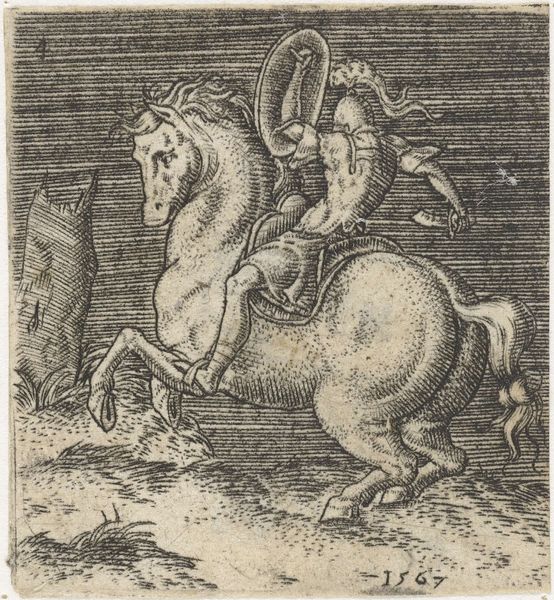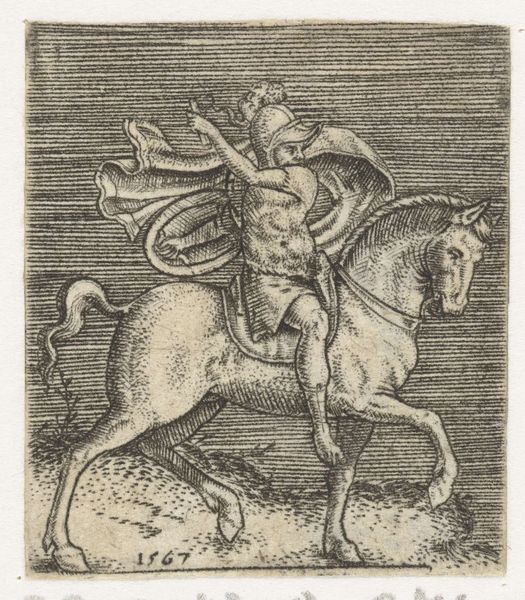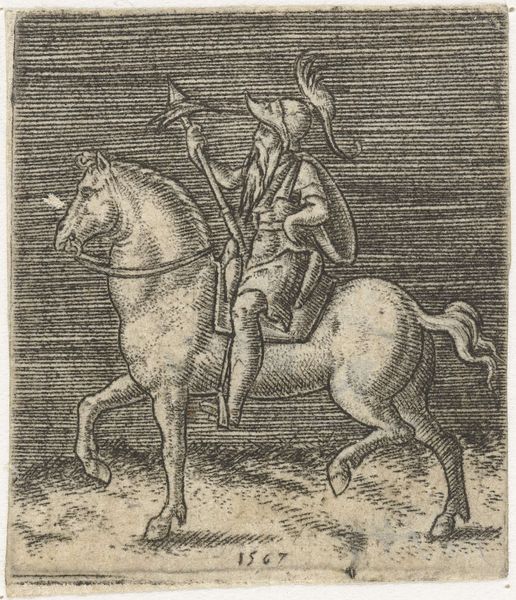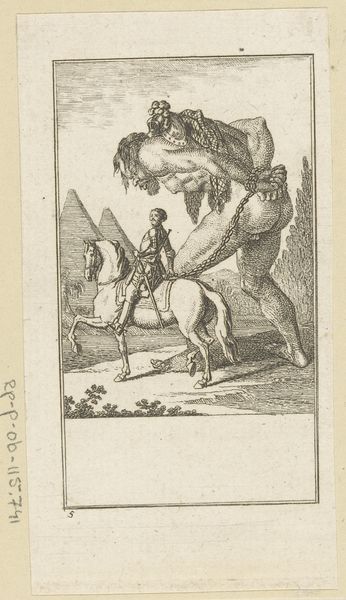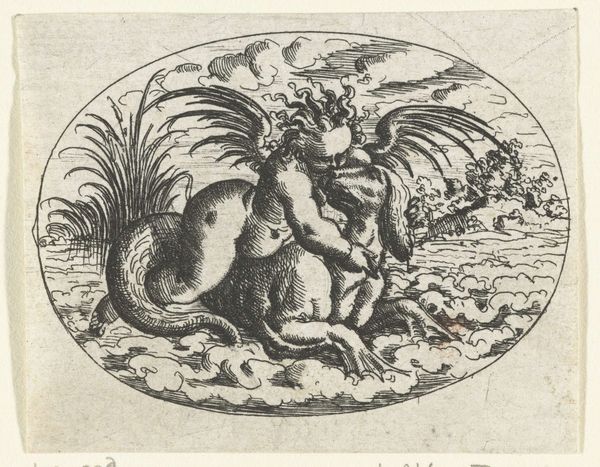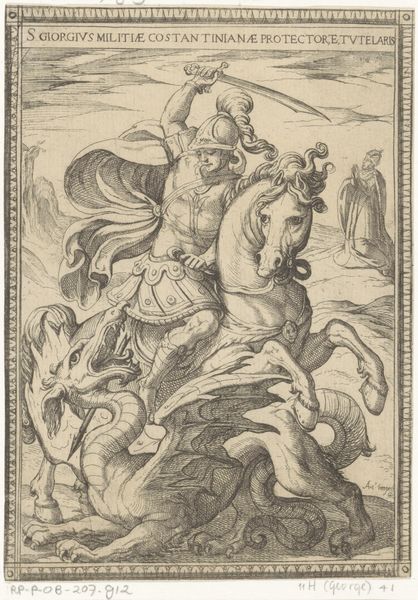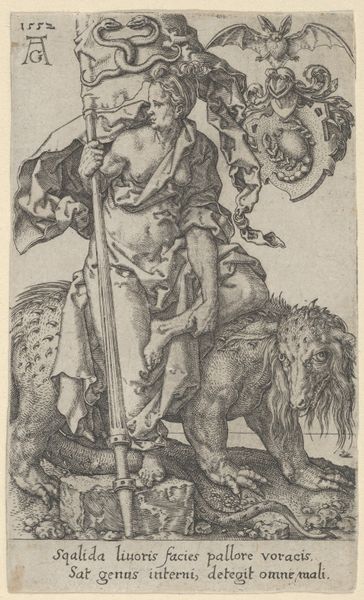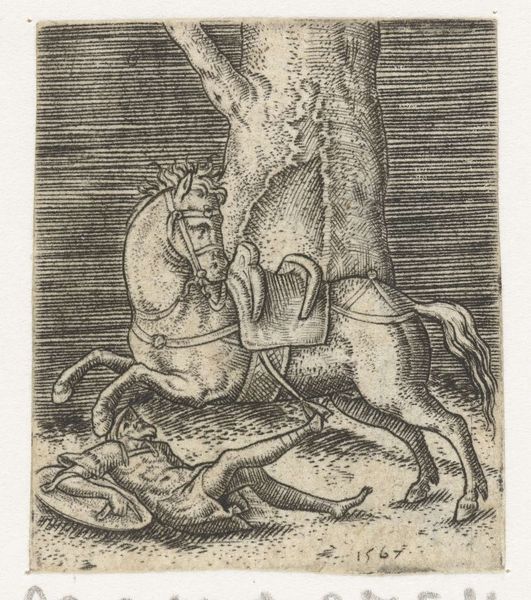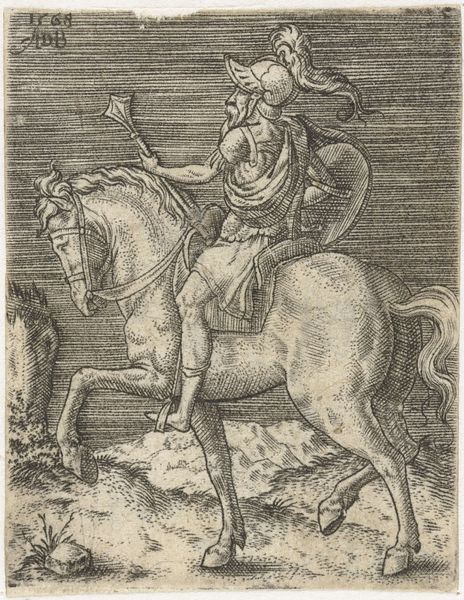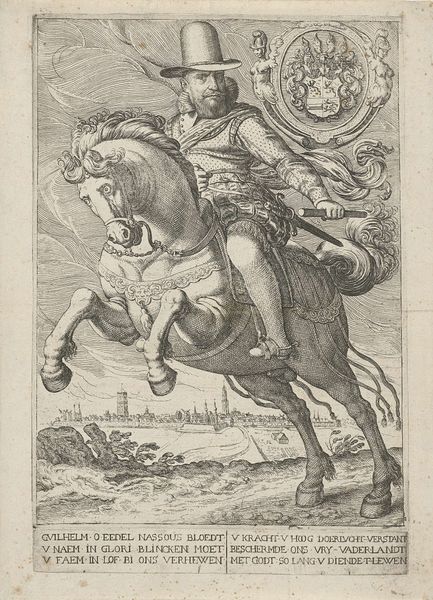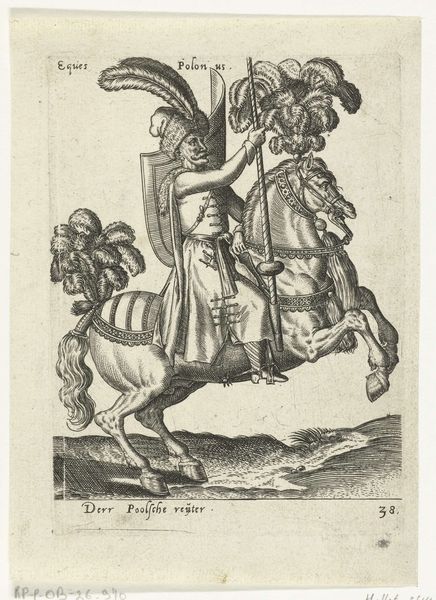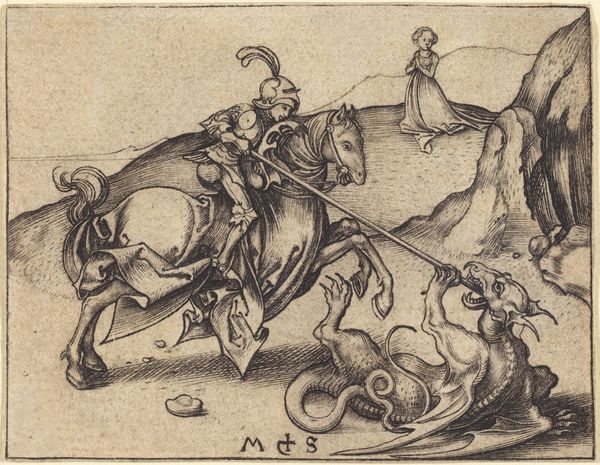
drawing, ink, engraving
#
drawing
#
pen sketch
#
pencil sketch
#
landscape
#
mannerism
#
figuration
#
ink
#
engraving
Dimensions: width 29 mm, height 35 mm
Copyright: Rijks Museum: Open Domain
Editor: Here we have "Roman Cavalryman on Horseback" by Abraham de Bruyn, created in 1567. It appears to be an ink drawing or engraving. There’s something unsettling about the exposed rider with his shield held defensively in front of his face. What do you see in this piece? Curator: I see a potent commentary on the vulnerability inherent in power, particularly male power, even when it's presented in a militaristic guise. Consider the date, 1567. This image appears during a period of religious and political turmoil across Europe, where established structures were being challenged. How might the rider's concealed face and defensive posture reflect the anxieties of the time? Editor: I guess that makes sense, but I initially saw it as more about heroism than anxiety. He’s armed and on horseback, seemingly ready for battle. Curator: But at what cost? The shield obscures his identity. What does it mean when a soldier's face is hidden? This piece challenges us to look beyond the superficial symbols of strength to examine the emotional and psychological impact of conflict. Think of the long shadow this cast on society – not just soldiers but the women, the families left behind and affected by these battles of power. Does seeing it that way alter your understanding? Editor: Yes, definitely. Thinking about it in the broader context of social anxieties and the cost of conflict provides a much richer interpretation. It’s not just a heroic image, it's also a statement about identity and vulnerability. Curator: Exactly. And understanding the social and historical landscape allows us to critically assess not only the image itself, but also the narratives that are constructed around it. We begin to question whose voices are amplified and whose are suppressed within that narrative. Editor: I’m beginning to look at art, and especially historical art, from a very different, much more engaged, perspective now.
Comments
No comments
Be the first to comment and join the conversation on the ultimate creative platform.
